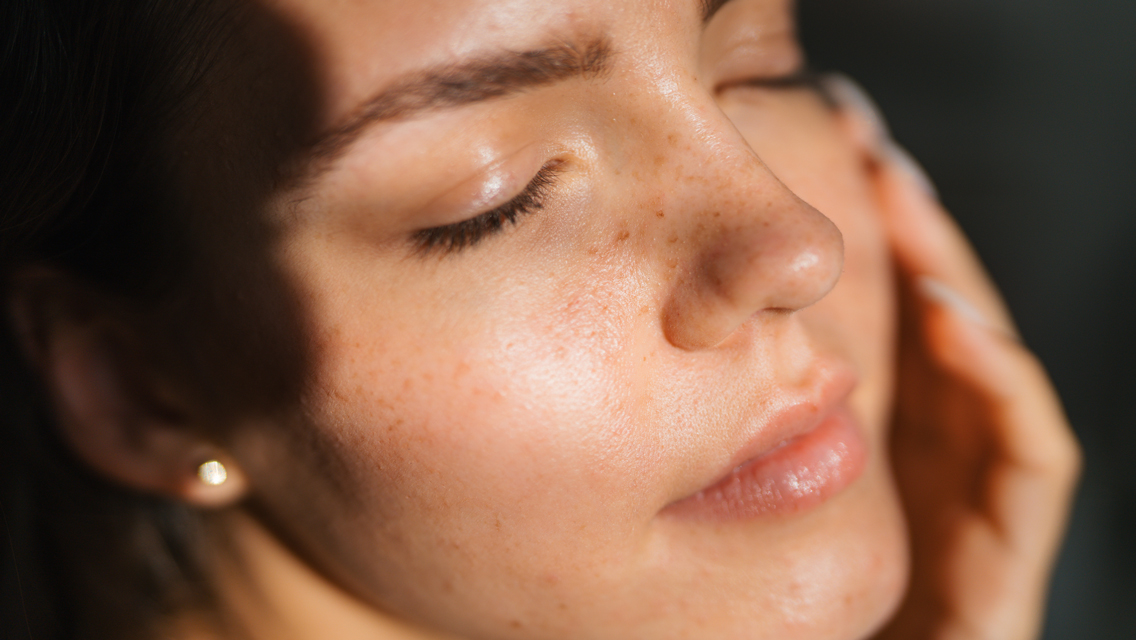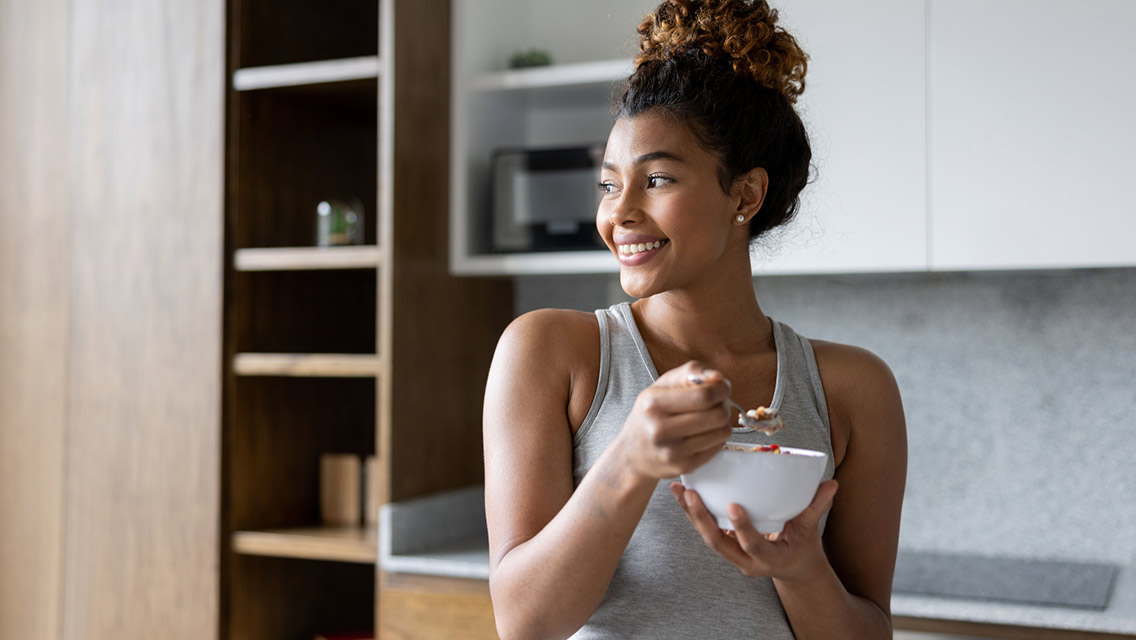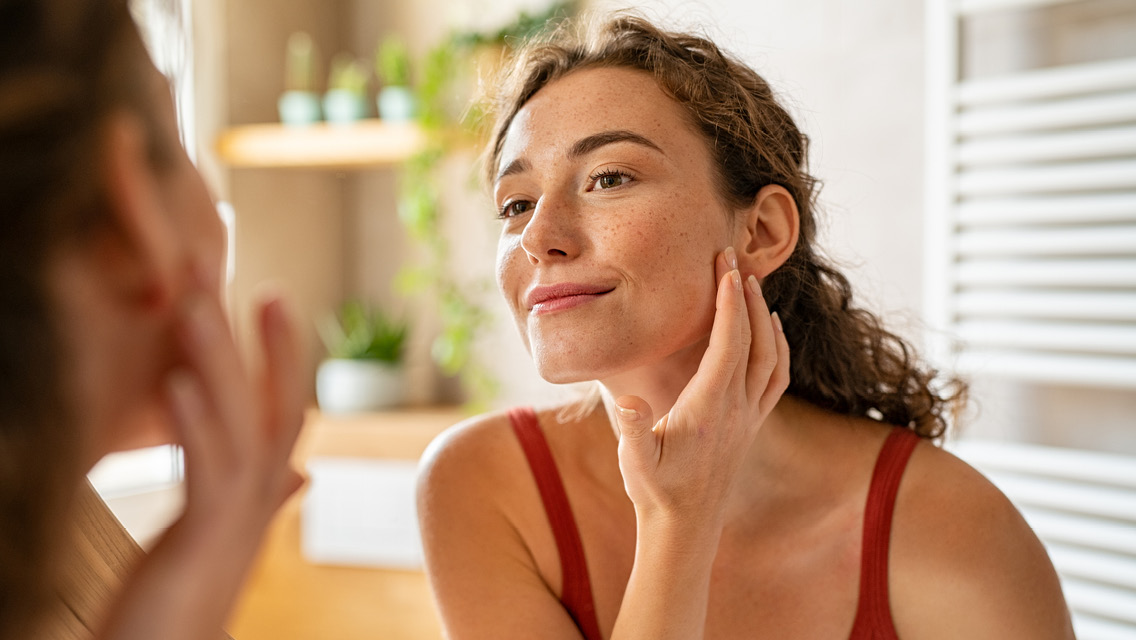Learn more about the following skin conditions:
Rosacea | Acne Mechanica | Hidradenitis Suppurativa (Acne Inversus) | Athlete’s Foot | Plantar Warts | Bacterial Folliculitis | Eczema | Impetigo
I was skiing in Colorado a few years ago when a crusty scab appeared along my nose. I thought it was a weird case of acne. But the eruptions became more severe when the temperature dropped, so I sought help. The diagnosis? A skin disorder called rosacea.
Fitness enthusiasts are especially prone to such skin conditions. Not only do we spend time braving skin-aggravating elements, but our activities cause heat and friction. Plus, close contact with other individuals increases our likelihood of picking up infections, says Charles E. Crutchfield III, MD, clinical associate professor of dermatology at the University of Minnesota Medical School in Minneapolis.
When skin conditions strike, they often have a significant impact on fitness programs. “They can cause enough embarrassment that people refuse to go to the gym,” Crutchfield says, adding that the stress related to visible skin conditions can also trigger unhealthy coping mechanisms, such as overeating. In other cases, fitness enthusiasts persist in their health routines but endure significant discomfort as a result.
Just a few months ago, after years of dealing with a series of mysterious underarm cysts, 17-year-old Xanthi Helfman of Eau Claire, Wis., was diagnosed with hidradenitis suppurativa, a skin condition that includes painful, tunneling cysts usually located in the armpits; in the creases of legs, breasts or groin; or on the scalp. Though these cysts can be aggravated by deodorant, sweating and chafing, Helfman decided that exercise was too important to quit and continued running and doing karate. When her cysts worsened as a result, she sought help.
Now a dermatologist is managing her condition with external and internal prescription medications, and Helfman is pursuing a variety of inflammation-reducing nutritional strategies, including reducing her intake of gluten, dairy and sugar, and taking turmeric supplements. While exercising, she usually wears sleeved shirts to avoid drawing attention to her underarm scars and to cover bandages she uses to protect any open wounds — which have, she notes, become increasingly rare with treatment.
This sort of hybrid approach can go a long way toward preserving the sanctity of your fitness priorities, according to Christina G. Steil, MD, a dermatologist in Hinsdale, Ill. “You still might have to alter your workouts slightly,” she says, “but skin conditions shouldn’t stop you from exercising.”
Still, it’s crucial to seek help if a skin condition is causing itching, pain, discomfort or emotional stress, or if you suspect it might be infectious. Here’s some advice from Crutchfield and Steil on how to battle five common skin conditions. (For additional tips, see “An Integrated Approach,” below.)
1. Rosacea
- Symptoms: Mild to severe redness, flushing, visible blood vessels, papules, pustules, eye irritation, dry facial skin, facial burning or stinging, and an enlarged nose. Symptoms usually appear on the face but can show up on the neck, chest, scalp or ears.
- Contagious: No.
- Triggers: Heavy exercise and exposure to sun, wind, heat or cold. May also include emotional stress, alcohol, spicy or hot foods, heated beverages, and certain skincare products.
- Treatment options: Prescription topical and oral medications.
- Other ways to overcome: Identify your triggers, then take steps while exercising to ward off flare-ups. For instance, wear sunscreen with SPF 15 or higher and protective clothing, avoid becoming overheated, and protect your skin from cold with a scarf or ski mask.
2. Acne Mechanica
- Symptoms: Acnelike rash that can be red, pustular and painful.
- Contagious: No.
- Triggers: Exercising while wearing occlusive (pore-blocking) protective gear like helmets and padding. It’s commonly seen around the chin, forehead and any skin that presses against padding. Wicking material may also trigger the rash in some people.
- Treatment options: Mild acne prescription medications and topical antibiotic lotions.
- Other ways to overcome: Place a cotton (or other soft, breathable fabric) lining against the skin where helmets or padding rub. Avoid wicking material if it bothers you.
3. Hidradenitis Suppurativa
- Symptoms: Inflamed, painful, tunneling cysts that can ooze; usually found under the arms, on the scalp, or in creases of groin, breasts or legs.
- Contagious: No.
- Triggers: The causes of this condition, which can emerge any time after adolescence, are still unknown. Friction and heat can exacerbate the cysts — and stress, smoking, and dietary or topical irritants seem to make the condition worse in many people.
- Treatment options: Oral medications, both antibiotic and anti-inflammatories, and other oral retinoid-based products. Recent clinical studies of treatments featuring turmeric and zinc gluconate nutritional supplements show promise.
- Other ways to overcome: Wear loose-fitting, breathable clothing to avoid irritating the skin. You may wish to cover open cysts while exercising, both to absorb any drainage and reduce discomfort and irritation caused by chafing.
4. Athlete’s Foot
- Symptoms: Itching, stinging and burning between the toes or on the soles of the feet; itchy blisters; cracking and peeling skin, especially around the bottoms or sides of feet; nails that are thick, discolored or pulling away from the nail bed.
- Contagious: Yes.
- Triggers: This fungal infection thrives in warm, moist environments like shoes, showers, gyms and locker rooms.
- Treatment options: For mild conditions, over-the-counter or prescription antifungal ointments, lotions, powders and sprays are available. If the infection is severe, your doctor may prescribe oral medication or a stronger topical antifungal cream.
- Other ways to overcome: Keep feet dry and use antifungal powder daily. Wear clean socks made of synthetic fiber to draw moisture away from feet. Then protect your feet in public places, wearing waterproof shoes in showers and using your own mat in yoga and Pilates classes. Also, alternate workout shoes to allow them to dry.
5. Plantar Warts
- Symptoms: Skin-colored bumps, usually on the heels or balls of feet; may feel rough to the touch; may have black dots at their center. May or may not be painful.
- Contagious: Yes.
- Triggers: Because they’re on the bottom of the foot, exercise can exacerbate pain.
- Treatment options: Over-the-counter products that contain salicylic acid, either in liquid formulation or through bandages. Dermatologists can freeze warts off with liquid nitrogen, remove them with a laser, inject medications into them or apply topical products to stimulate the immune system.
- Other ways to overcome: Always wear shoes in the gym and flip-flops in the locker room. If necessary, put a corn pad around the wart to minimize pressure while exercising, and do non-weight-bearing activity until it feels better. To prevent further infection, moisturize your feet to keep skin healed and sealed.
6. Bacterial Folliculitis
- Symptoms: Small, pus-filled pimples around the base of hair follicles on the arms, legs or scalp.
- Contagious: Yes.
- Triggers: Sweating can make it worse, and it can be especially troublesome where clothing is tight or rubbing against skin.
- Treatment options: You might have to avoid the gym for a while, as this superficial bacterial infection is usually spread by direct contact. See a doctor to have one of the bumps cultured. Treatment will depend on the type of bacteria but could include antibacterial lotions, medicated cleansers or oral antibiotics.
- Other ways to overcome: Wear loose-fitting clothing that wicks sweat when exercising. Also, use pump soaps versus bar soaps, and when the infection is active, avoid hot tubs and whirlpool spas because you’re contagious at that point, and hot tubs and whirlpool spas are breeding grounds for bacteria.
7. Eczema
- Symptoms: Dry, red, itchy patches, which may bubble and ooze. In adults, they usually occur on the face, neck, and insides of the elbows, knees, and ankles.
- Contagious: No.
- Triggers: Sweating can worsen eczema. Sports like hockey, lacrosse and soccer, where protective gear rubs against the skin, also can be irritating. So, too, can broken-down elastic from older workout apparel, chlorine in swimming pools, and rubber mats or flooring. If washed in conventional, fragranced laundry products, fitness apparel that sits directly on skin can also make eczema worse.
- Treatment options: Regular fragrance-free lotions and creams (e.g., Cetaphil, Aveeno and Lubriderm) help moisturize and heal the skin, while cold compresses and antihistamines can relieve itching. If the condition doesn’t improve, nonprescription corticosteroid creams and ointments are available. Prescription corticosteroid creams and ointments or oral corticosteroids may be necessary. Untreated eczema may lead to a staph superinfection, which may require topical or oral antibiotics.
- Other ways to overcome: Adjust your habits to avoid aggravating the skin, says Christina Steils, MD, a dermatologist in Hinsdale, Ill. For instance, use fragrance-free detergent when washing clothes; wear sweat-wicking clothing when exercising; avoid rubber mats or flooring in gyms (if you’re allergic to latex); shower after sweating; and slather your skin with a heavy moisturizer like Un-Petroleum Jelly before swimming to protect your skin from chlorine.
8. Impetigo
- Symptoms: Honey-colored scabs or crusts around the nose, chin, face and other areas that signal a bacterial infection.
- Contagious: Yes.
- Triggers: Often mistaken for herpes, impetigo is actually a bacterial infection — usually staph — of the skin.
- Treatment options: Topical or oral antibiotics.
- Other ways to overcome: When there’s crusting or oozing, you’re contagious, so avoid close contact with other people, even skipping the gym until the impetigo is under control, which usually takes one to three days.
Dealing with skin problems can be physically challenging and emotionally discouraging, but they don’t have to derail you from leading a healthy, active life. Most can be treated and, if not cured, at least managed in a way that empowers you to continue participating in the fitness activities you love.
An Integrated Approach
Proper nutrition and regular exercise aren’t just good for maintaining general health and fitness — they’re also crucial for your skin. “When something isn’t right inside of us, it will show in our skin,” says nutritionist Liz Lipski, CCN, PhD, author of Digestive Wellness and founder of www.innovativehealing.com.
Take, for instance, eczema, acne and rosacea, all of which can be exacerbated by inflammatory reactions to dairy, gluten or sugar. If you’re having unexplained skin issues or suspect you might have a food intolerance, work with a certified clinical nutritionist — locate one at www.iaacn.org — to determine whether any of these foods are bothering you.
Even if you don’t have a full-blown allergy or intolerance, consider minimizing your intake of trans fats and refined sugars and flours (all of which are known to increase inflammation in the body) and load up on antioxidant-rich, alkaline-forming foods like fruits, vegetables, nuts, legumes and healthy omega-3 fatty acids, all of which help to reduce inflammation and rev up the body’s self-healing capacities.
You might also consider taking a daily probiotic supplement — especially if you’re treating your skin woes with antibiotic medications. “Antibiotics are generally prescribed when you have something microbial going on; probiotics help restore balance. They also help restore gut and skin micro-flora balance and prevent diarrhea and other complications of taking anti-biotics, which indiscriminately kill all bacteria — good and bad,” says Lipski.
Even if you’re not on antibiotics, getting 30 to 50 billion organisms a day through probiotic supplements or foods like yogurt can maintain skin health by keeping the immune system in balance.
Soothe Your Self-Consciousness
If you’ve dealt with a skin condition, you know how tough it can be to go out in public — especially to the gym, where you’re often in close quarters with other people. You feel like all eyes are on you, but are they really?
“We’re usually much more aware of our condition than other people are,” says Christina G. Steil, MD, a dermatologist in Hinsdale, Ill. To help ease your embarrassment, wear clothing that covers problem areas, if possible. Gradually, though, you want to get comfortable being in your own skin, so to speak. “It’s challenging, but once you take that initial step, you’ll find that most people are accepting, and you’ll have better self-esteem,” says Charles E. Crutchfield III, MD, clinical associate professor of dermatology at the University of Minnesota Medical School in Minneapolis. If other gym-goers do comment, be prepared to educate them. “Overall, be proud of yourself for taking care of your health, and if people have issues with that, that’s their problem,” he adds.
This article originally appeared as “Bumping Up Against Skin Problems” in the September 2006 issue of Experience Life.




This Post Has 0 Comments